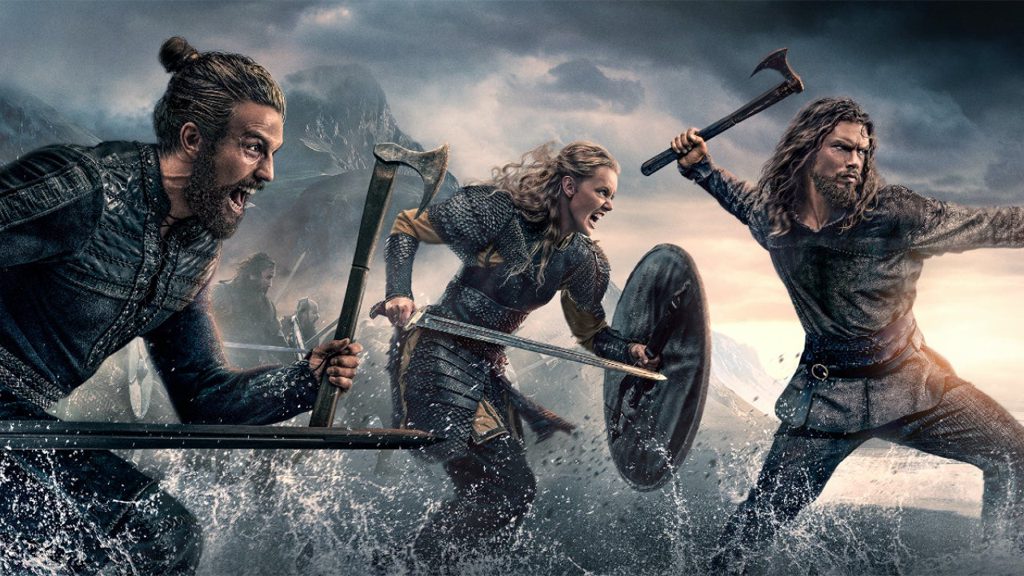
It’s unusual for a streaming giant to make a sequel to one of its rivals’ shows, especially if the TV series in question was a major hit. But that’s exactly what Netflix has done with Vikings Valhalla, a spiritual successor to Michael Hirst’s Vikings TV show, which ended in December 2020.
Vikings may have originally aired on the History Channel, but its migration to Prime Video during its final season – Vikings was available on Prime Video in the UK as early as 2015, though – makes Netflix’s sequel all the more curious. After all, why make a Netflix series that follows on from your competitors’ own early medieval offering?
Ahead of Vikings Valhalla’s launch on February 25, TechRadar sat down with the show’s cast to find out how Netflix’s sequel honors and differs from its predecessor. We also discuss why the show takes creative liberties with Viking history and the challenges of filming the series’ substantial fight sequences.
Rediscovering the Vikings
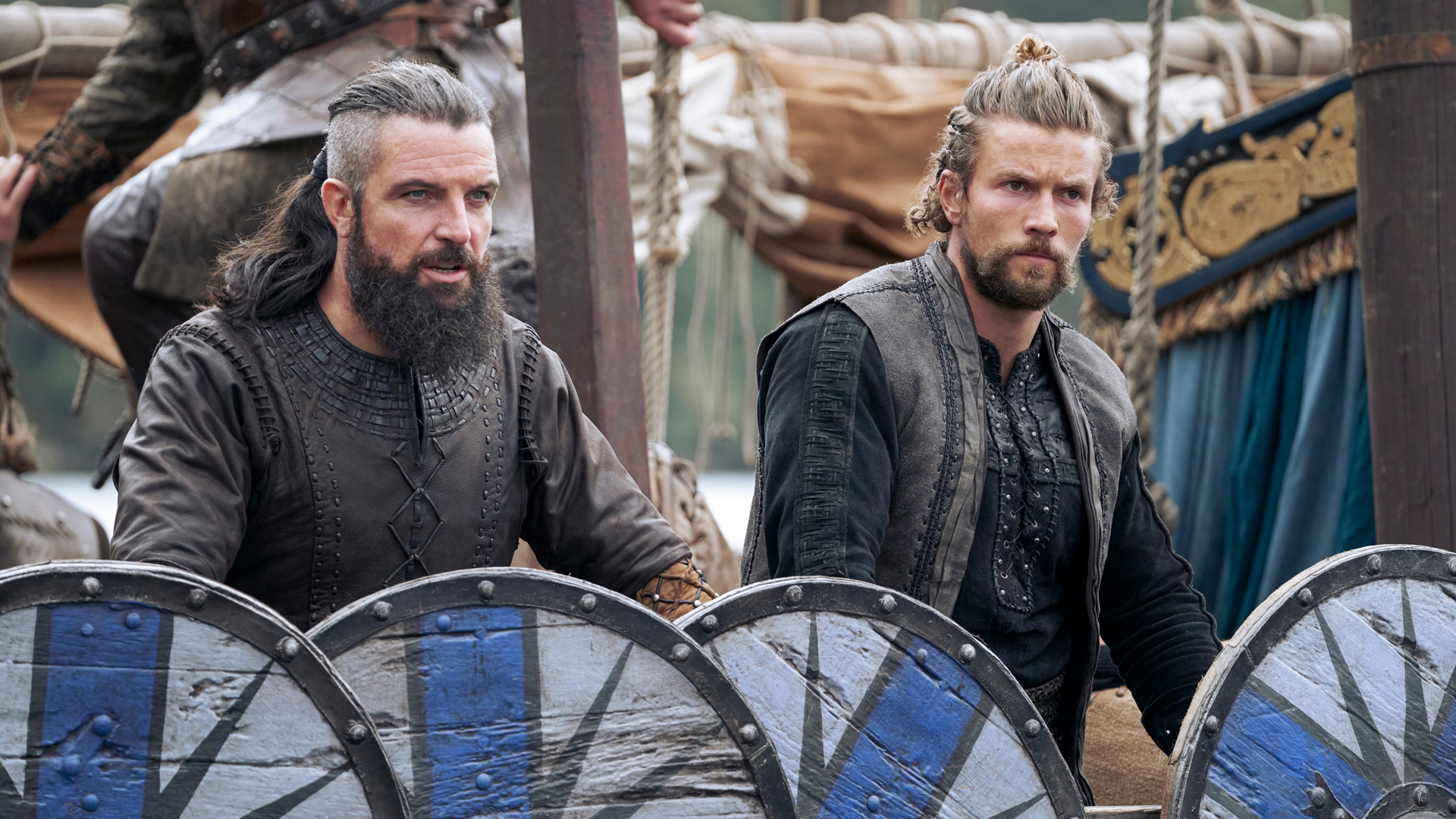
Set 100 years after the events of the original show, Valhalla follows three legendary Vikings – Leif Eriksson (Sam Corlett), Freydís Eiríksdóttir (Frida Gustavsson), and Harald Hardrada (Leo Suter) – in the years that precede the end of the Viking era.
After the Anglo-Saxon King Aethelred II (Bosco Hogan) orders the massacre of Vikings living on British shores, King Canute of Denmark (Bradley Freegard) leads an invasion of Nordic forces to retaliate and seize control of England’s throne. It’s here where Eriksson, Eiríksdóttir and Hardrada’s paths collide, setting them on an epic, years-spanning journey that’ll secure their places in history – and potentially Valhalla itself.
For a show steeped in Viking and Norse mythology, it’s unsurprising that Valhalla’s cast members heavily researched their characters to ensure their portrayals were historically accurate. However, those set to play well-known individuals from this era, including King Canute (Freegard) and Emma of Normandy (Laura Berlin), soon realized that months of preparatory work would be in vain or more difficult to perform than initially expected.
“You try and get a feel for your character, but often you’ll find that research is useless,” Freegard explains. “The creative team have made their own decisions about where that character fits into the show, and that’s what happened with Valhalla. Things that I brought to King Canute before I read any scripts were useful from a character study perspective. But, in the end, you have to create a character that serves the drama that [showrunner] Jeb Stuart wanted to tell.”
Sign up for breaking news, reviews, opinion, top tech deals, and more.
“When I started my research, I realized how little we know about the Vikings,” Berlin adds. “There’s a lot of information out there, but there aren’t many sources that are really trustworthy. We have a lot of historical facts, but we don’t actually know how these people felt or thought about things.”

In some instances, that lack of historical evidence worked in the cast’s favor. As Gustavsson and David Oakes (who plays Earl Godwin of Wessex) explain, the dearth of information surrounding their characters provided the opportunity to flesh out Freydis’ and Godwin’s personalities and motives.
“There was very little to find in Freydis’ history,” Gustavsson says. “But that’s good because we’re not doing a historically authentic show. It’s not 100% accurate or a full-blown documentary. That gave me freedom to create the Freydis that I felt the text was speaking to, and I worked a lot with Jeb to rework her character. It’s great to have something to use as a reference point, but it’s equally important to me to bring my own take to her.”
“The most useful thing about this show is that you've already got a historical arc to aim for,” Oakes adds. “That gives you a choice over how you muddy up each character’s journey, or how you add extra little loops as you go along, which makes for a fascinating watch.”
We’re not doing a historically authentic show. It's not 100% accurate or a full-blown documentary
Frida Gustavsson, Valhalla cast member
Novel takes on mythological Vikings aren’t the only creative liberties that Valhalla takes. Jarl Estrid Haakon, portrayed with real authority by Danish actor Caroline Henderson, is a wholly original character created specifically for the show.
The confusion around Henderson’s character is understandable. After all, a real-life Norwegian Viking called Haakon Sigurdsson was also known as a King Canute lieutenant named Hakon Jarl. Henderson, though, is keen to stress that her character bears no association with Sigurdsson. Instead, as a fiercely proud Black Viking woman, Henderson believes Jarl Haakon is emblematic of the fact that Viking society was more diverse than historians initially thought.
“She’s based on a lot of strong women and male leaders that we know of today,” Henderson explains. “I've done a lot of research, and it's been very interesting to read because Viking people traveled much more than we knew. Now, especially through DNA sequencing and other genetic research, we know that they traveled further afield to Africa, North America, and the Middle East.”
Blending fiction with fact
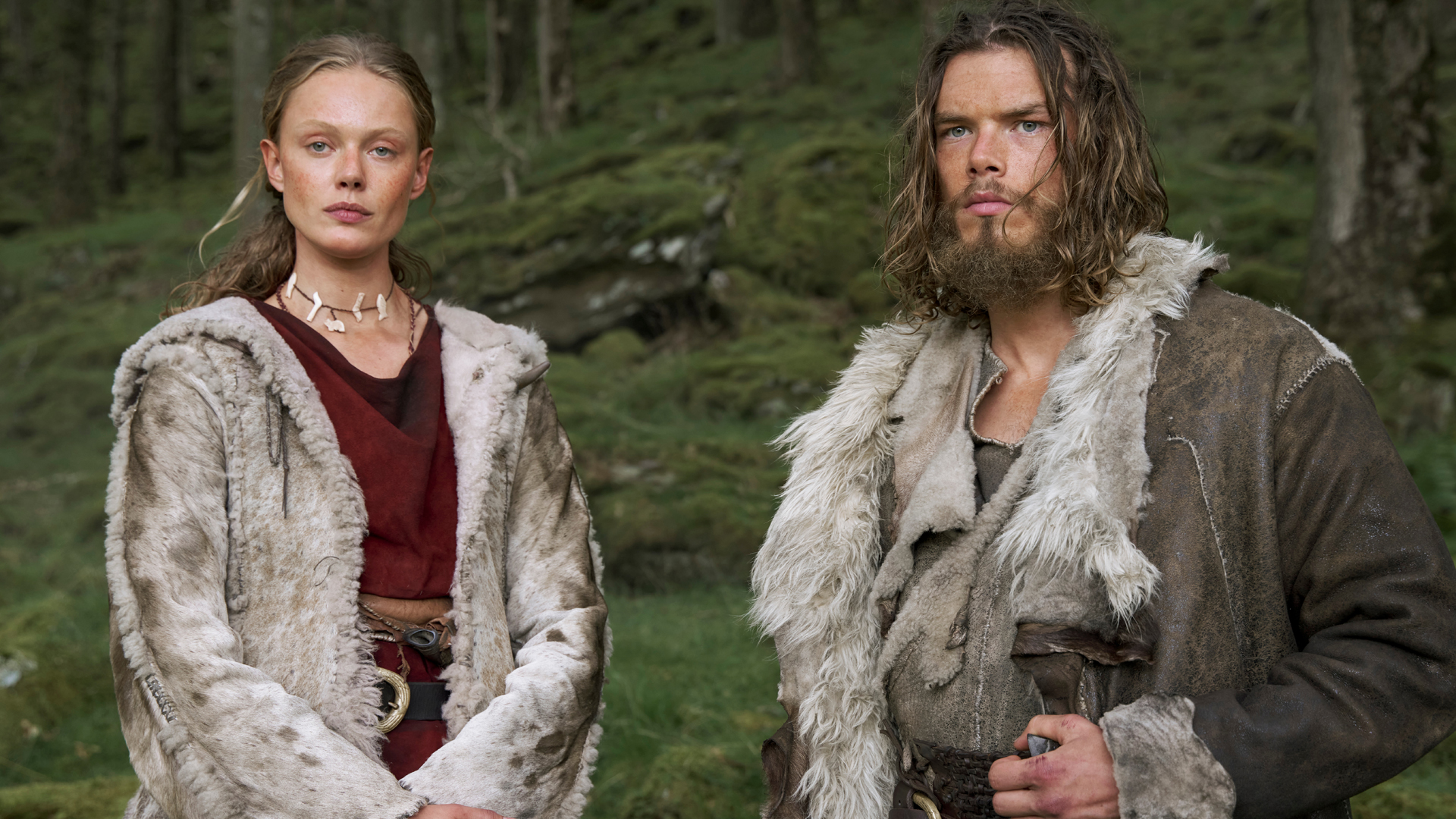
Vikings Valhalla may make subtle (and sometimes stark) differences regarding its character line-up, but the series is still deeply rooted in Viking history. For one, Valhalla explores the rapid rise of Christianity within certain sections of Viking society, which created deep divisions between the newly formed Christians and their pagan counterparts. It’s an internal conflict that threatens to engulf King Canute’s army before they even set sail for England, but one that the Danish monarch knows he can use for his own geopolitical gains.
“I think Canute starts to draw upon the use of religion to gain political power,” Freegard muses. “Compared to previous Viking rulers, he understands the importance of keeping the smaller Viking tribes, plus allies within the Anglo-Saxon kingdoms, united and on his side. Religion plays a big part in keeping everyone on board and aiming for the same political goals.”
“What's interesting to me is that you can see how religion becomes a battle between Christians and pagans,” Johannes Johannesson, who portrays Olaf ‘the Holy’ Haraldsson. “There are religious motives behind every move and thought, and they [Viking leaders] are using religion as a tool to control people. These motives aren't always good, or even being driven by the religion itself, but by the power that comes with it.”
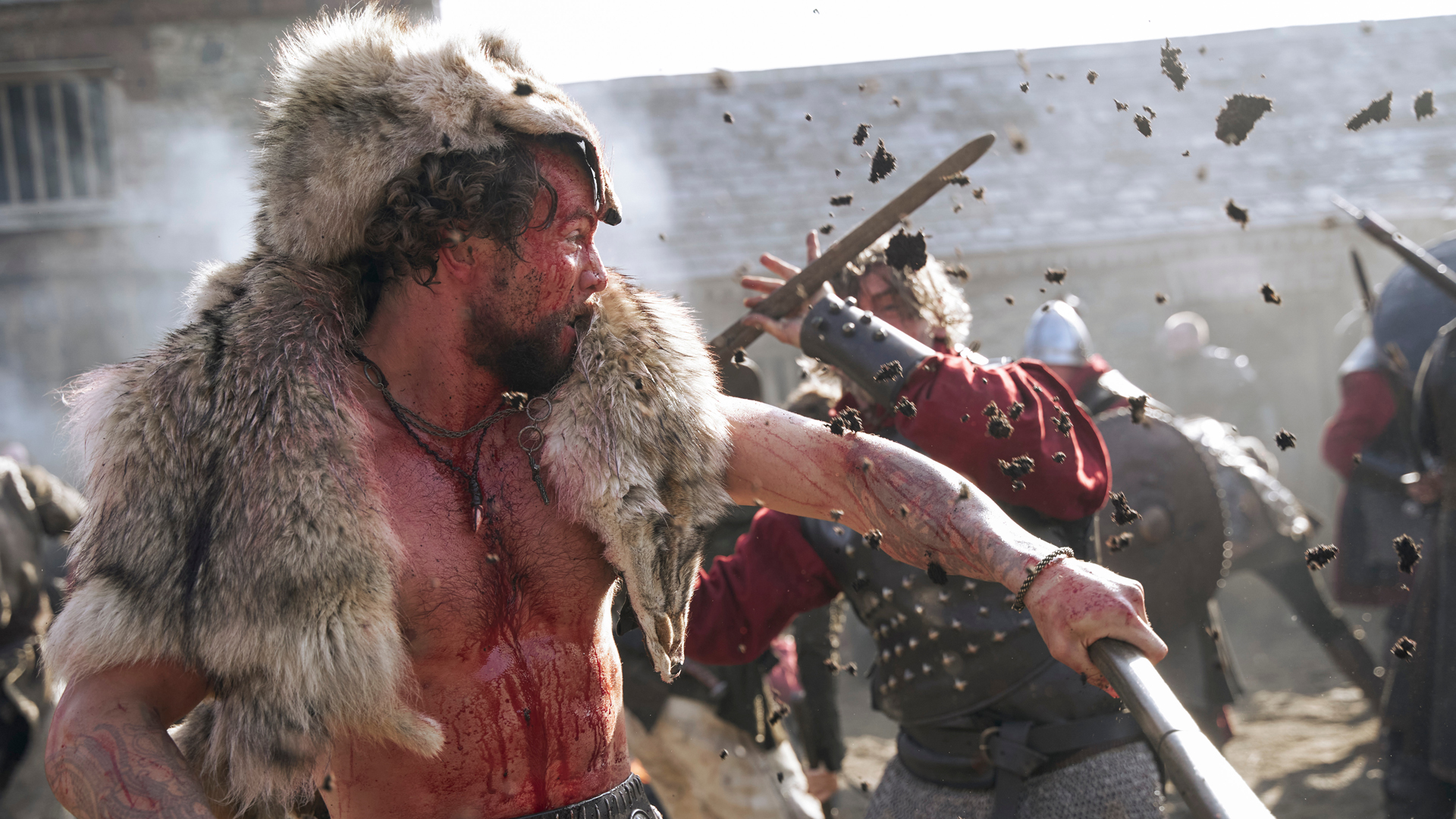
The drama at Valhalla’s heart makes for compelling viewing, but audiences will get more of a thrill from the bruising and gruesome battles depicted in season 1. From the Vikings’ siege of London in 1013 to Aethelred’s attempts to retake the city during the infamous Battle of London 12 months later, to the mini skirmishes throughout the season’s eight episodes, viewers will certainly get their fill of action.
With every entry – from episode 3 onwards – containing its own extensive battle, it was inevitable that injuries would be commonplace on set. The show’s cast accumulated black eyes, gashes, bruises, and sprains during Valhalla’s 10-month shoot. For Leo Suter, though, such wounds were par for the course, particularly if it meant that Valhalla’s numerous battles were acted out and filmed authentically.
“One of the joys was the relentlessness of it,” he says. “Once you finish one fight sequence, you're onto the next because each episode has had its own clash. You leave it all out on the field because you're expanding your ability to move. It was a true feat of endurance, which just aided the energetic roles we were playing, so that relentless, primal nature was actually a great contributor.”
A Viking streaming war
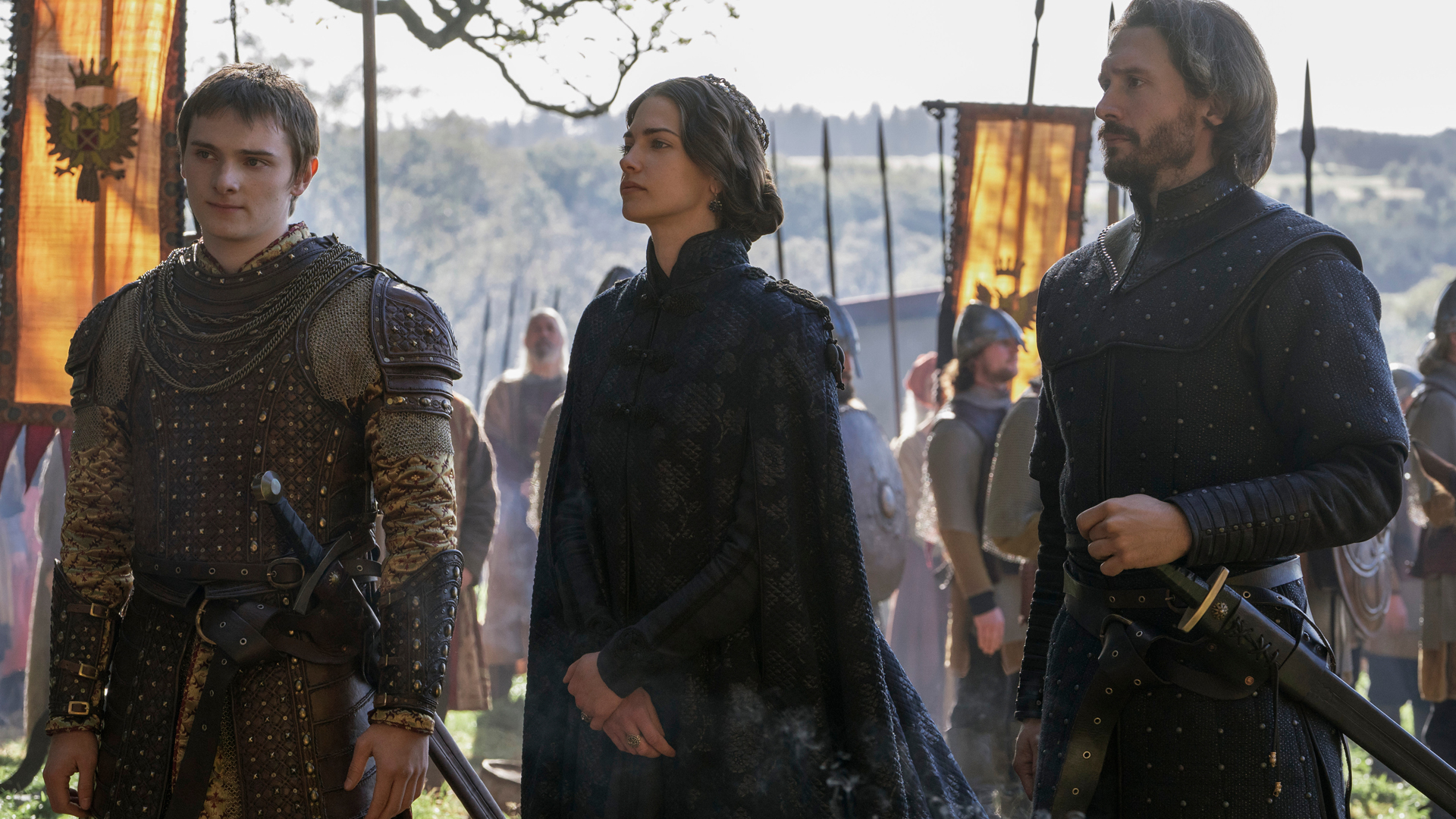
Still, the question remains: why would Netflix become the home for a new Vikings adventure that simultaneously acts as a spin-off show and a sequel to Hirst’s original series? Sam Corlett, who grew up watching Vikings with his father in Australia, doesn’t concern himself with where Valhalla is available to watch. Instead, the ex-Chilling Adventures of Sabrina star just hopes to live up to the series that came before – and maybe elevate it to another level narratively.
“With respect to what came before, we're stepping into our own world with our own mix of energies and our own ingredients,” Corlett says. “Jeb has come at it with a different pace in this new saga. But, at the same time, it’s an honor to continue the legacy of that show, and I hope we can continue to pay tribute to that and perhaps raise it to the next level.”
As the world’s biggest streamer, though, Netflix prides itself on creating and releasing its own original content. And, while it can be argued that Vikings Valhalla is an original series, it’s still intrinsically tied to the series that predated it. In that sense, it’s difficult to untangle the two productions.
In time, maybe it’ll be easier to distinguish Vikings Valhalla and its predecessor from each other. There’s likely to be two more seasons of Vikings Valhalla (per Deadline) so, by the time the series ends, it could’ve potentially sailed off in a different stylistic or tonal direction. Alternatively, Netflix could acquire the rights to Hirst’s Vikings TV show and become the go-to streamer for live-action Vikings content. Until such a time, though, Netflix’s Viking offering is fundamentally tied to its History and Prime Video sibling – for better or worse.
Vikings Valhalla launches exclusively on Netflix on Friday, February 25.
- The Witcher season 3: what we know so far
As TechRadar's senior entertainment reporter, Tom covers all of the latest movies, TV shows, and streaming service news that you need to know about. You'll regularly find him writing about the Marvel Cinematic Universe, Star Wars, Netflix, Prime Video, Disney Plus, and many other topics of interest.
An NCTJ-accredited journalist, Tom also writes reviews, analytical articles, opinion pieces, and interview-led features on the biggest franchises, actors, directors and other industry leaders. You may see his quotes pop up in the odd official Marvel Studios video, too, such as this Moon Knight TV spot.
Away from work, Tom can be found checking out the latest video games, immersing himself in his favorite sporting pastime of football, reading the many unread books on his shelf, staying fit at the gym, and petting every dog he comes across.
Got a scoop, interesting story, or an intriguing angle on the latest news in entertainment? Feel free to drop him a line.